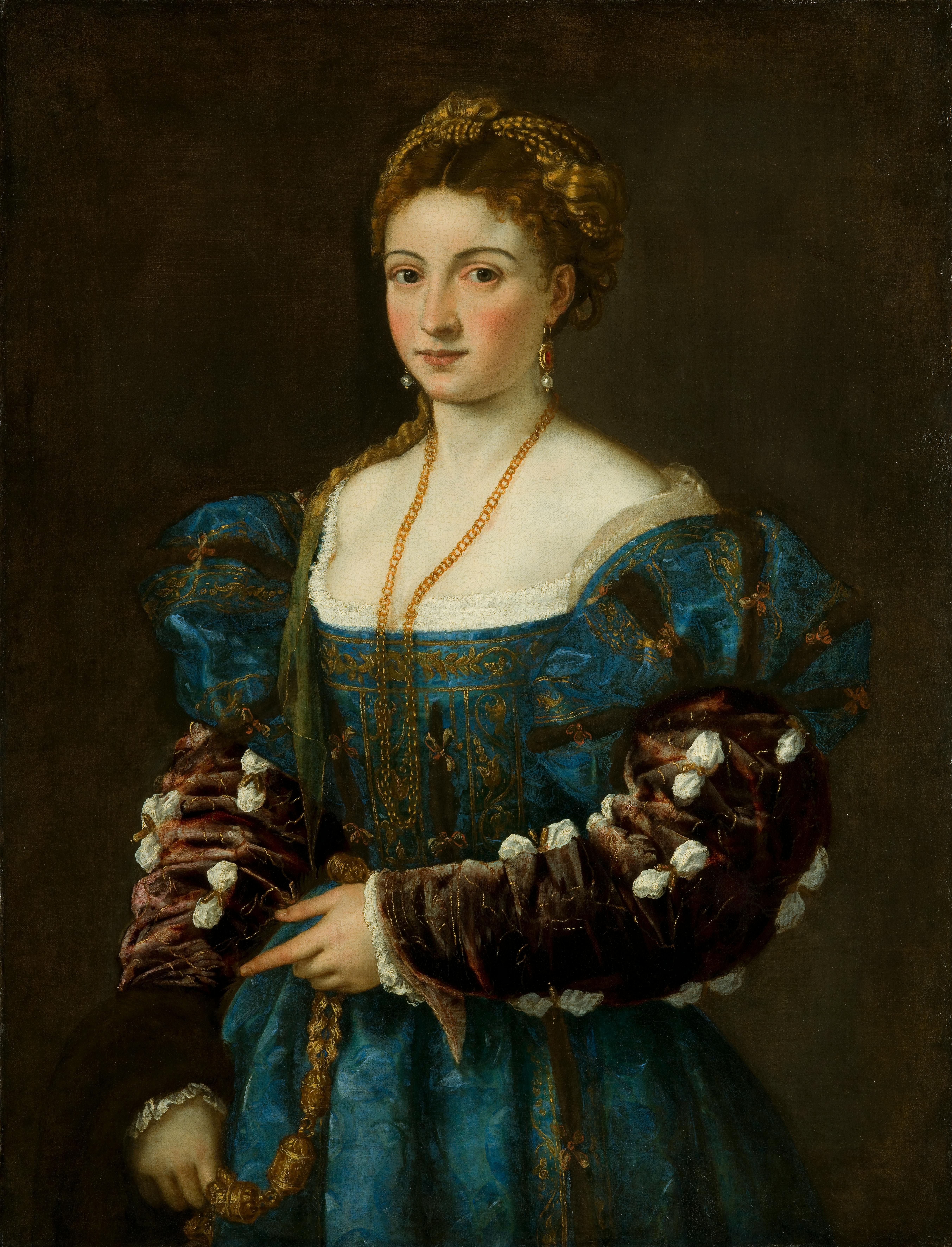Portrait of a Lady (“La Bella”)
Titian (Pieve di Cadore 1488/90 - Venice 1576)
The female portrait, known by its complimentary epithet “La Bella”, is one of the most famous paintings of the later years of Titian's artistic career, confirming his reputation as a master portrait painter and founder of the Venetian painting movement. The painting shows the three-quarter-length portrait of a young woman wearing a precious, exquisitely tailored dress in blue damask fabric with subtle gold embroidery and slashed sleeves in burgundy velvet to show the white fabric puffs of the blouse underneath, and a fur draped over her right hand with casual elegance. This nonchalance is mirrored in the way the woman's face captures the observer's attention, as its features adhere to the precise aesthetic canons of the Italian Renaissance such as a high forehead, slender eyelashes, vibrant gaze and black eyes, pale cheeks daubed with red, breast radiant with the colors of the moon and the honey-colored hair styled in knotted braids. Art historians have long sought the subject’s identity, proposing suggestions including the client's consort, the artist’s preferred model or an unknown lady at court. Clarifying the debate in part is a letter dated in 1535 from the Duke of Urbino, Francesco Maria della Rovere, who acquired the work in Venice in around 1536-38. Writing to Titian to organize delivery of the work, the Duke cited the painting as “that portrait of the woman wearing the blue dress”, without attributing any specific identity to the lady and thus removing the doubt that the subject was known to the Duke. Moreover, it reinforces the suggestion that the painting was intended as a representation of the ideal of feminine beauty, a very popular theme in the courts of the Italian Renaissance. The painting was transferred to Florence in 1631 together with the entire Vittoria della Rovere collection, and it was there it obtained the epithet it has retained to this day, when a guide written in the end of the eighteenth century described the woman as the painter's “favorite” or rather his “Bella”, at the time synonymous with beloved.
